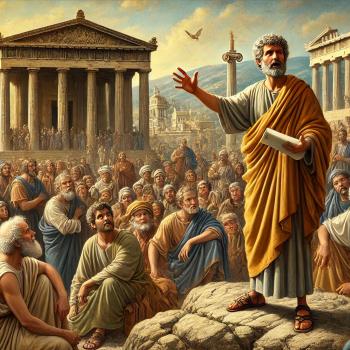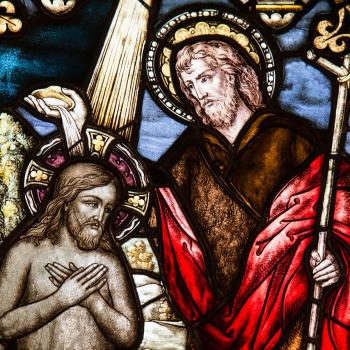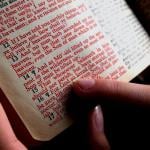The four Gospels report a number of miracles that Jesus performed when with his disciples. Certain scholars point to these miracles as evidence against the Gospels having reliable historical information. Did Jesus really heal blind and lame people and cast out demons from possessed individuals?

According to Dr. Craig Keener, we should not exclude such reports that come from “eyewitness material,” from contemporaries who experienced Jesus as an exorcist and healer of various ailments (Craig S. Keener, Christobiography: Memory, History, and the Reliability of the Gospels, 331).
Keener has written a number of publications in which he addresses and documents miracles, past and present, including Miracles: The Credibility of the New Testament Accounts (Baker Academic, 2011), Miracles Today (2021), and Acts: An Exegetical Commentary (Baker Academic) esp. 1:320–82.*
Some of the points he makes regarding this issue are as follows (see Christobiography, pp. 331–45):
-
Reports of healings and exorcisms Jesus did are consistent throughout many cultures, past and present.
Reports of the supernatural, comparable with what we find in the Gospels (and some admittedly not as comparable), are widespread. We find such reports in ancient historical sources such as Livy’s Roman History, Tacitus’s Histories, and Josephus’s writings, the latter inclusive of the claim that Jesus performed “wonderful works” (Antiquities of the Jews, 18.63).
The Gospel testimonies are matched with more recent and contemporary reports of miracles, signs, and wonders that Keener documents in his books, Miracles and Miracles Today. There is an account, for instance, of an apparent resuscitation from John Wesley’s Journal (Dec. 25, 1742). Keener himself wrote in his prayer journal of a time he witnessed a college student pray that a bad storm would stop, and it did within seconds of that prayer (dated Nov. 6, 1993). Keener and his wife also interviewed a number of cases considered miracles from witnesses they personally know. Keener provides the documentation in his books I mentioned.
Some may choose to call such reports anomalies. Others may attempt to explain them in various natural and rationalistic ways, but this does not nullify the testimonies of those who claim to have witnessed or experienced such things. Even if some of them were to turn out as frauds, it could hardly be the case that all the reporters are frauds.
-
The earliest reports of Jesus are unanimous in depicting him as someone who heals people and casts out demons: a healer and exorcist
These reports come from the Gospels and Q (a source from which Matthew and Luke are said to draw some of their information). This happens to be the case despite there being no necessity for Israel’s prophets to perform such miracles as these. In fact, Jesus’s contemporary, John the Baptist, performs no miracle.
About 40% of Mark’s Gospel, often considered the oldest Gospel, focuses on narratives containing miraculous scenes. Some scenes appear in all three Synoptic texts (i.e., Matthew, Mark, Luke). They thus appear to pass the criterion of multiple attestation when it comes to authenticity.
-
The miracle reports come from eyewitnesses
These accounts, Gospels and more recent times, often appear to be derived from the testimony and memory of eyewitnesses. There is no good reason to suppose a priori that the eyewitnesses in the Gospels should not be trusted.
And regarding the more recent testimonies, Keener writes: “When extrapolated in hard numbers, the results of a 2006 Pew Forum survey appear to suggest that hundreds of millions of Christians globally today claim to have directly witnessed divine healing. While no one thinks that all these claims represent genuine anomalies, they do challenge the traditional argument against miracle claims—the argument that no respectable eyewitnesses offer such claims” (Christobiography, 343). Atheists and skeptics might be successful at explaining away some of these reports, but millions? Good luck!
Conclusion
In the primary sources of the four Gospels miracles are widely attested in Jesus’s ministry. His contemporaries experienced Jesus as a healer as well as exorcist, regardless of how such things might be explained in our day. Such evidence, as Keener affirms, “does not count against the biographic character of the Gospels” (Keener, Christobiography, 345).
For my earlier interview with Craig Keener on this book, see “Jesus and Ancient Biography: An Interview with Craig Keener on His Recent Book, Christobiography.” (https://www.patheos.com/blogs/inchrist/2020/07/jesus-in-the-gospels-as-ancient-biography-craig-s-keener/)
* See also Keener’s articles such as “Miracles” in The Oxford Encyclopedia of Bible and Theology (Oxford University Press, 2015), 101–07; “Miracle Reports and the Argument from Analogy,” Bulletin for Biblical Research 25 (2015) 475–95; “A Reassessment of Hume’s Case against Miracles in Light of Testimony from the Majority World Today,” Perspectives in Religious Studies 8 (Fall, 2011) 289–310; and “Spirit Possession as a Cross-Cultural Experience” Bulletin for Biblical Research 20 (2010) 215–36.














